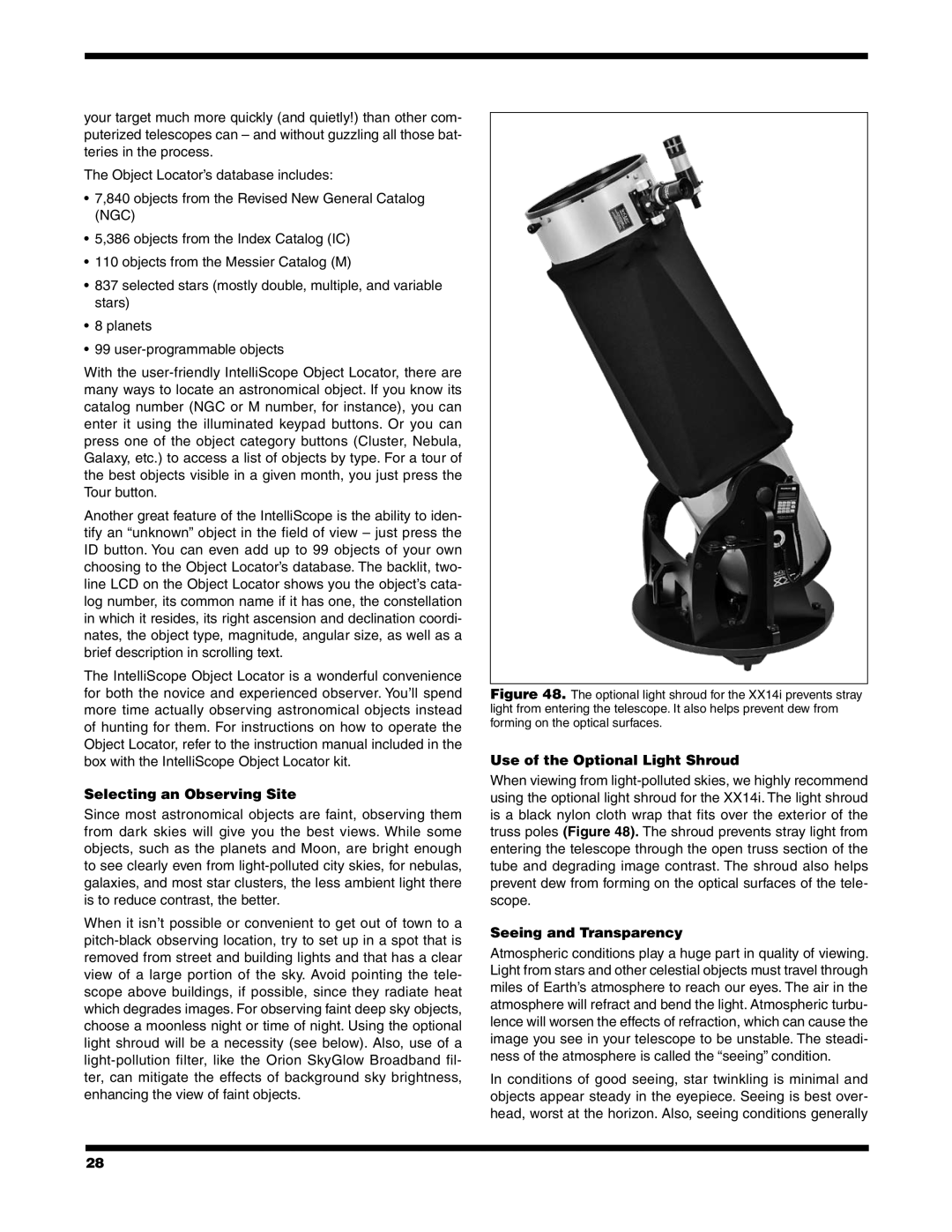
your target much more quickly (and quietly!) than other com- puterized telescopes can – and without guzzling all those bat- teries in the process.
The Object Locator’s database includes:
•7,840 objects from the Revised New General Catalog (NGC)
•5,386 objects from the Index Catalog (IC)
•110 objects from the Messier Catalog (M)
•837 selected stars (mostly double, multiple, and variable stars)
•8 planets
•99
With the
Another great feature of the IntelliScope is the ability to iden- tify an “unknown” object in the field of view – just press the ID button. You can even add up to 99 objects of your own choosing to the Object Locator’s database. The backlit, two- line LCD on the Object Locator shows you the object’s cata- log number, its common name if it has one, the constellation in which it resides, its right ascension and declination coordi- nates, the object type, magnitude, angular size, as well as a brief description in scrolling text.
The IntelliScope Object Locator is a wonderful convenience for both the novice and experienced observer. You’ll spend more time actually observing astronomical objects instead of hunting for them. For instructions on how to operate the Object Locator, refer to the instruction manual included in the box with the IntelliScope Object Locator kit.
Selecting an Observing Site
Since most astronomical objects are faint, observing them from dark skies will give you the best views. While some objects, such as the planets and Moon, are bright enough to see clearly even from
When it isn’t possible or convenient to get out of town to a
Figure 48. The optional light shroud for the XX14i prevents stray light from entering the telescope. It also helps prevent dew from forming on the optical surfaces.
Use of the Optional Light Shroud
When viewing from
Seeing and Transparency
Atmospheric conditions play a huge part in quality of viewing. Light from stars and other celestial objects must travel through miles of Earth’s atmosphere to reach our eyes. The air in the atmosphere will refract and bend the light. Atmospheric turbu- lence will worsen the effects of refraction, which can cause the image you see in your telescope to be unstable. The steadi- ness of the atmosphere is called the “seeing” condition.
In conditions of good seeing, star twinkling is minimal and objects appear steady in the eyepiece. Seeing is best over- head, worst at the horizon. Also, seeing conditions generally
28
